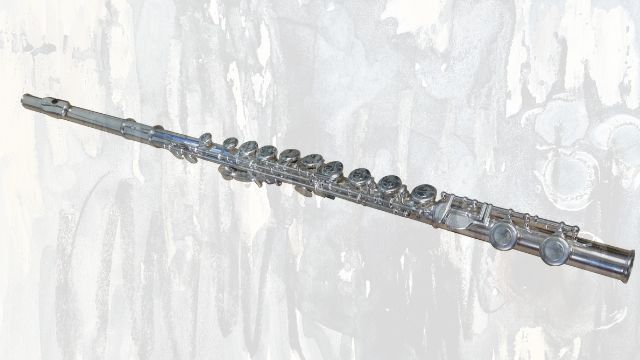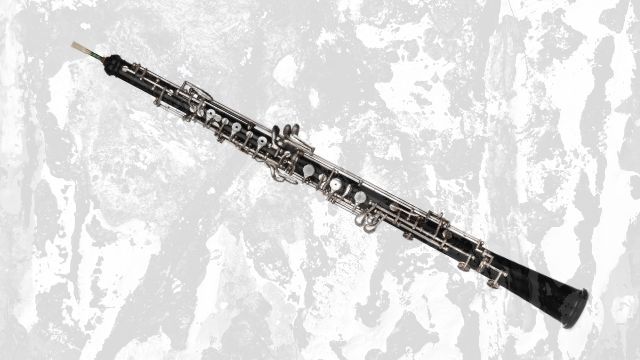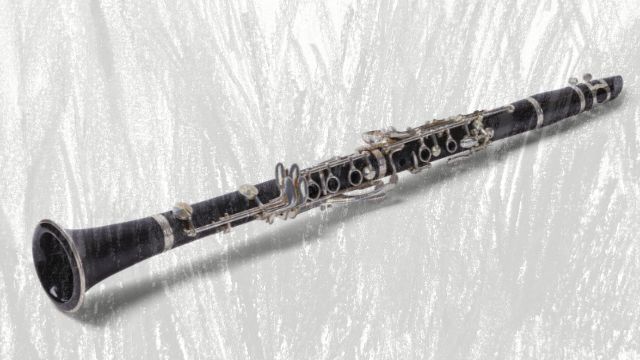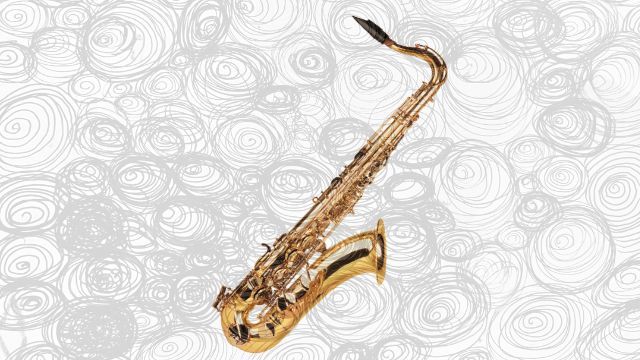With their unique ability to convey a wide range of emotions and add colour to musical compositions, woodwinds have become an essential part of not just the orchestra, but many ensembles, and solo performances too.
The Woodwind family is a group of musical instruments that produce sound by the vibration of air within a tube or pipe made of wood or metal. These instruments are called "woodwinds" because historically, they were predominantly made of wood. However, modern woodwind instruments can also be made of other materials like plastic or metal.
The woodwind family includes instruments such as the flute, clarinet, oboe, bassoon, and saxophone. Each instrument in this family has its own unique characteristics and playing techniques.
The Percussion Family
The String Family
The Brass Family
The Keyboard Family
Where do Woodwind Instruments Originate From?
One of the earliest known woodwind instruments is the flute, which dates back thousands of years. Flutes made from bone, ivory, or reeds have been found in archaeological sites across different continents, including Europe, Asia, and Africa.
The flute's simple design and the use of natural materials made it accessible to many cultures, leading to its widespread development and adoption.
The development of reed instruments, such as the clarinet and oboe, can be traced back to ancient Egypt and Mesopotamia. These early reed instruments were made using hollowed-out reeds or animal bones with reeds attached to them.
Over time, these instruments evolved in shape, design, and construction, and found their way into various cultures throughout history.
While woodwind instruments have diverse origins across different cultures, they have been refined, adapted, and expanded upon by craftsmen, musicians, and composers throughout history.
Today, woodwind instruments are played and cherished worldwide, contributing to the rich tapestry of musical traditions and genres.
What Are Woodwind Instruments Made From?
Woodwind instruments can be made from a variety of materials, including wood, metal, and plastic. The choice of material can affect the instrument's sound, durability, and playability.
Traditionally, many woodwind instruments were predominantly made of wood, hence the name "woodwind."
Metal is another common material used in the construction of woodwind instruments. Brass, silver, and various alloys, such as nickel silver, are often employed for certain parts of instruments like the keys, mechanisms, and tubing.
In recent years, the use of synthetic materials, particularly various types of plastic, has become more prevalent, especially for student-level instruments. Plastic is durable, less susceptible to changes in temperature and humidity, and typically less expensive than wood or metal.
What Is In The Woodwind Family?
Piccolo

The piccolo is a small, high-pitched woodwind instrument and a member of the flute family. It is essentially a smaller version of the flute, typically measuring around half the size. Despite its diminutive size, the piccolo possesses a distinct and piercing sound that cuts through the orchestral texture.
Like the flute, the piccolo is made of metal, usually silver or nickel silver. It consists of a cylindrical tube with finger holes and a conical head joint, ending in a small, tapered mouthpiece. The player produces sound by blowing across the mouthpiece's edge, causing the air column inside the instrument to vibrate.
The piccolo is known for its bright and penetrating sound. Due to its smaller size, it produces notes an octave higher than the flute. This higher register allows the piccolo to add brilliance, sparkle, and a commanding presence to musical compositions. Its sound is often associated with military marches, outdoor concerts, and festive occasions.
Flute

The flute is a versatile and enchanting woodwind instrument that has captivated audiences for centuries. It is one of the oldest known musical instruments, with a history dating back thousands of years.
The flute is typically made of metal, such as silver or nickel silver, and consists of a cylindrical tube with finger holes and a mouthpiece. The player produces sound by blowing across the edge of the mouthpiece, creating vibrations in the column of air inside the flute.
The flute is a transverse instrument, meaning it is played horizontally, with the player blowing across the mouthpiece from the side. This playing position allows for fluid melodic lines and the execution of rapid passages with ease.
Flautists use a combination of fingerings and various techniques, such as tonguing, vibrato, and breath control, to shape the sound and create expressive performances. The instrument's fingerings are achieved by covering or uncovering the tone holes along the length of the flute.
Oboe

The oboe is a captivating woodwind instrument with a distinct and hauntingly beautiful sound. It belongs to the double reed family of instruments and is known for its rich and expressive tones.
The oboe is typically made of wood, often grenadilla or a similar hardwood. It consists of a long, slender tube with a conical shape and is equipped with a double reed. The double reed is created by two small pieces of cane that vibrate against each other when air is blown between them.
When played, the oboe produces a unique and penetrating sound that can range from warm and plaintive to bright and piercing. Its tonal qualities make it highly expressive, allowing the player to convey a wide range of emotions and moods.
Playing the oboe requires a precise embouchure and delicate control over breath and fingerings. The musician must learn to manipulate the reeds and control the instrument's nuances to produce a well-balanced and resonant sound. Due to its challenging nature, the oboe often demands dedication and practice to master.
Clarinet

The clarinet is a versatile and widely recognized woodwind instrument that possesses a rich and resonant sound. It belongs to the single-reed family of instruments, producing sound by vibrating a single reed attached to its mouthpiece.
The clarinet is typically made of wood, such as grenadilla or other hardwoods. However, there are also clarinets made of synthetic materials or plastic, which are often used by beginners and in marching bands due to their durability.
Its cylindrical body features a series of tone holes and keys that the player operates to change pitch. By pressing the keys and covering or uncovering the tone holes, the musician can produce a wide range of notes, allowing for melodic and expressive performances.
The clarinet family includes various sizes and types, each with its own range and tonal characteristics. The most common type is the Bb clarinet, often used in orchestras and bands. Other clarinets include the smaller Eb clarinet, the bass clarinet with its rich and deep sound, and the clarinet's highest-pitched member, the soprano clarinet.
Bassoon

The bassoon is the largest and lowest-pitched instrument in the woodwind family, known for its distinctive timbre and wide range.
The bassoon is made of wood, typically maple or another hardwood, and features a long, folded conical tube. Its complex design includes various sections, keys, and a double-reed mouthpiece. The double reed is made up of two pieces of cane that vibrate against each other when blown into, producing sound.
Playing the bassoon requires considerable skill and technique due to its large size and intricate key system. The musician must have strong breath control, and precise fingerings, and master the art of controlling the double reed to produce the desired tone and articulation.
When played, the bassoon produces a rich and dark tone that can range from velvety and lyrical to robust and commanding. Its unique voice adds depth, gravity, and a sense of elegance to musical compositions. The bassoon's expressive capabilities allow for a wide range of emotions and dynamic contrasts.
Saxophone

The saxophone is known for its distinctive shape, brass construction, and its ability to seamlessly blend with both jazz and classical ensembles.
The saxophone was invented by Adolphe Sax in the 1840s with the goal of creating an instrument that combined the tonal qualities of both woodwind and brass instruments. It features a conical body, a single reed mouthpiece, and a series of keys and tone holes.
Saxophones come in a range of sizes, from the highest-pitched soprano saxophone to the lowest-pitched bass saxophone. The most common saxophones include the alto, tenor, and baritone saxophones, each with its own distinct voice and playing characteristics.
The saxophone is renowned for its versatility and expressive capabilities. It possesses a rich and warm tone that can be soulful, vibrant, or even brassy depending on the player's technique and musical style. Its sound can cut through the ensemble with power and agility, yet also blend beautifully in more lyrical passages.
How Do Woodwind Instruments Work?

Woodwind instruments produce sound through the vibration of the air inside the instrument. The basic principle is that the player blows air into or across a mouthpiece, causing a column of air to vibrate, which in turn creates sound.
Here's a general overview of how woodwind instruments work:
- Mouthpiece: Woodwind instruments have a mouthpiece that the player blows into. The mouthpiece may have a reed (a thin piece of cane) or be a simple opening that the player blows across.
- Air Stream: When the player blows into the instrument, a stream of air is directed into the instrument's air column. The speed, angle, and pressure of the air stream influence the sound produced.
- Reed Vibrations: In instruments with a reed, such as a clarinet or a saxophone, the air stream causes the reed to vibrate against the mouthpiece. The reed's vibrations create sound waves that travel through the instrument.
- Resonance and Tube Length: The air column inside the instrument's tube or body acts as a resonator. The length of the tube determines the instrument's pitch. By altering the length of the tube through fingering or key mechanisms, the player can change the pitch and produce different notes.
- Fingerings and Keywork: Woodwind instruments have a series of finger holes or keys that the player opens and closes to control the length of the vibrating air column. This manipulation of the air column alters the pitch and allows the player to play different notes.
- Tone Control and Articulation: The player's embouchure (the way they shape their lips and control the air stream) affects the tone and articulation of the sound produced. Different embouchure techniques, tongue placements, and air pressure variations create a wide range of tonal and expressive possibilities.
Woodwind instruments vary in their specific mechanics and construction, but they all rely on these fundamental principles to produce sound.
Woodwind Family Ranges - The Highest to Lowest Pitch
The pitch ranges of woodwind instruments can vary depending on the specific instrument type and size. Here are the general pitch ranges for some common woodwind instruments:
Flute
The flute has a wide pitch range and is capable of playing from around middle C (C4) and extending upwards for multiple octaves. Professional flautists can often reach notes well above the staff.
Clarinet
The clarinet family consists of various sizes, each with its own range. The most commonly used clarinet, the Bb clarinet, has a range starting from E3 (below middle C) and extends upwards for three octaves or more.
Oboe
The oboe has a pitch range starting from Bb3 or C4 (middle C) and extends upwards for two to three octaves. It can also play some notes below middle C, but those are less commonly used.
Bassoon
The bassoon has a wide pitch range and is known for its deep and rich sound. It typically starts from Bb1 or C2 (an octave below middle C) and extends upwards for two to three octaves.
Saxophone
The saxophone family includes various sizes, each with its own range. The soprano saxophone has a range similar to the Bb clarinet, starting from E3 and extending upwards for multiple octaves. The alto saxophone has a range starting from Bb3 and extends upwards for about two and a half octaves. The tenor saxophone has a range starting from A2 or Bb2 and extends upwards for about two and a half octaves. The baritone saxophone has a range starting from low A or Bb1 and extends upwards for about two octaves.
It's important to note that these pitch ranges are approximate and can vary depending on the skill and technique of the player. Additionally, extended techniques, such as harmonics, multiphonics, and altissimo register, can allow woodwind players to achieve even higher pitches beyond the traditional range.
Woodwind Articulations
Woodwind articulations refer to the various techniques used by woodwind players to articulate notes and add expressive elements to their playing. Here is a brief list of common woodwind articulations:
- Staccato: Short and detached notes, played with a crisp attack and quick release.
- Legato: Smooth and connected notes, played with a seamless transition between each note.
- Tonguing: Using the tongue to articulate each note, creating a distinct starting point for each sound. Different types of tonguing include single tonguing, double tonguing (alternating between syllables), and triple tonguing.
- Slur: Playing a series of notes smoothly and without tonguing, creating a legato phrase.
- Accent: Emphasizing a specific note or phrase by playing it with more force or intensity.
- Marcato: Playing notes with a strong accent and emphasis, creating a bold and pronounced sound.
- Flutter Tonguing: Creating a rapid and fluttering effect by rolling the tongue while blowing air into the instrument.
- Trill: Alternating between two adjacent notes rapidly, creating a rapid oscillation between the two pitches.
- Glissando: Sliding smoothly between two pitches, creating a continuous change in pitch.
- Vibrato: Oscillating the pitch of a sustained note, adding a subtle or expressive wobble to the sound.
- Multiphonics: Producing multiple pitches simultaneously by using special fingerings and embouchure techniques.
- Growl: Creating a vocal-like effect by combining a note with a low, guttural sound produced in the throat.
These articulations, along with variations and combinations, allow woodwind players to add dynamics, expression, and texture to their performances. They are essential tools for shaping musical phrases and conveying emotions through the instrument's sound.






